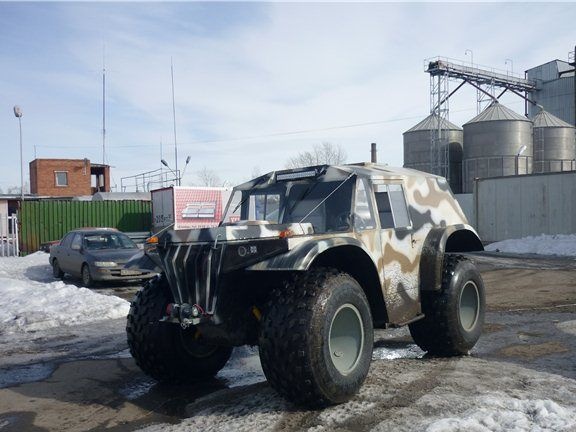
One of the most aesthetic options for a biaxial all-terrain vehicle. The machine is designed for 2 people, but it also carries with it the necessary supply of tools and spare parts, so that it is possible to quickly and easily fix a malfunction on the way. Moreover, all-terrain vehicle has compartments for the transport of goods (for example, the carcass of a dead animal in the hunt).
This all-terrain vehicle has the following characteristics:
1) The maximum speed for good coverage (primer) is 50 km \ hour, the minimum is 1.5 km \ hour. Measurements were made using GPS in practice. the reason for such a low maximum speed of movement is that the author deliberately went for it, realizing that in his all-terrain vehicle he wants to see not a racing car, but a car that can drive through any windbreak, crawl through wet snow and mud, and if necessary, and cross the river / lake, while remaining on the go and without spending large resources to overcome obstacles.
2) Hydraulic volumetric steering
3) It is long 3700 mm
4) Width 2370 mm
5) height 2200 mm
6) Weight 1300 kilograms.
Details, mechanisms and materials used by the author in the construction of this machine:
1) The internal combustion engine was installed from Toyota 2NZ
2) Automatic gearbox and cooling radiator taken from Kraz (oil)
3) The steering column of the Gaz-69
4) Truck 4WD Mazda Bongo FC 3.7 donated its front and rear axles.
5) Pump dispenser Italy
6) hydraulic cylinder from T-140
7) Front suspension on the Mazurkevich team
8) Rear suspension on half springs
9) Tires brand Avtoros size 1200.
10) The disks were assembled independently, under rolling (Garagashyan). Disc weight 11 kg, width 50 centimeters.
11) Pumping from the air conditioner pump.
12) The main light on Xenon, and the side, far and rear LEDs.
Consider a phased construction all-terrain vehicle.
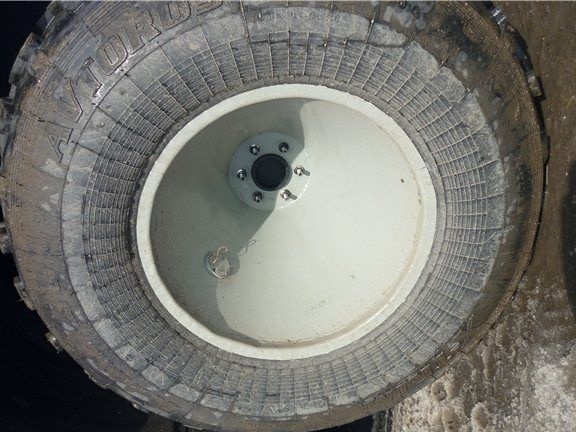
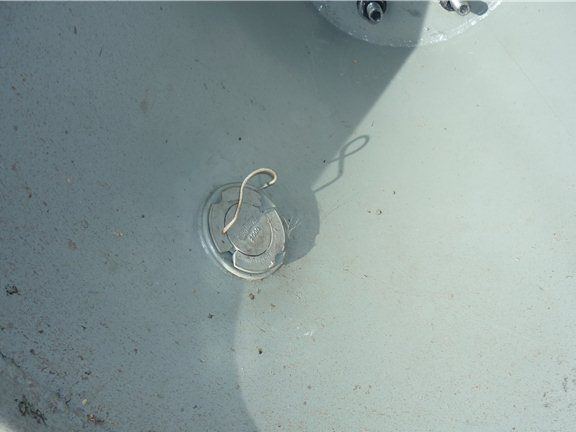
To start, the wheels were assembled.
Then the author proceeded to the full-scale assembly of the frame:
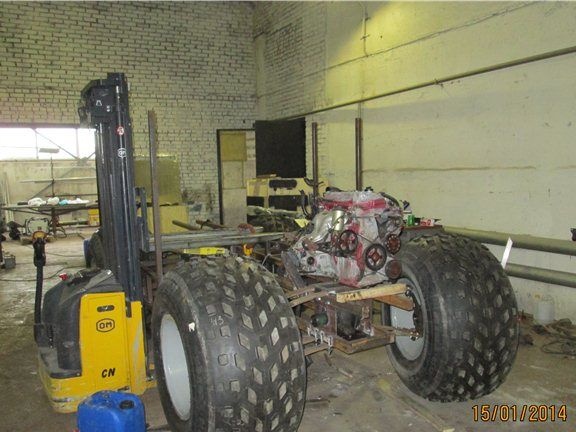

In the photo below, you can consider the nodes of the structure:
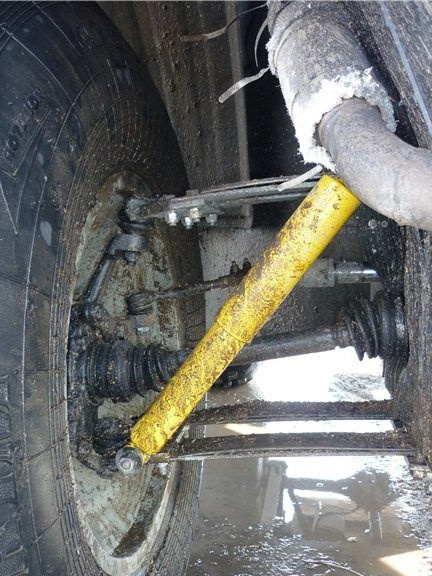
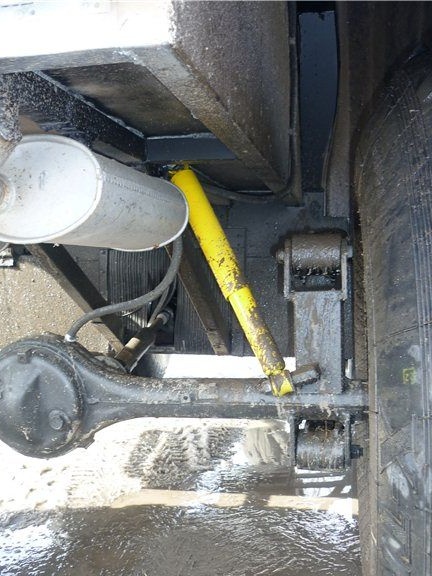
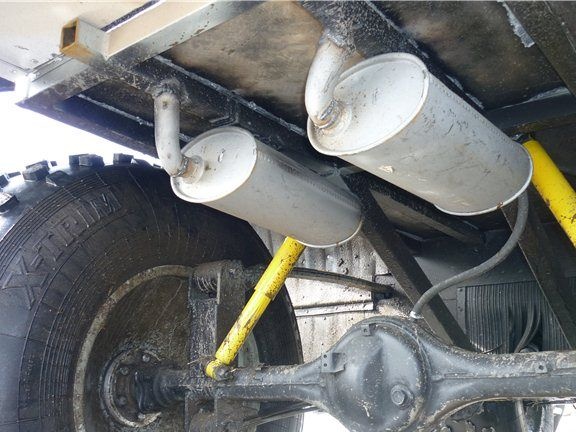
As you can see from the top picture, the exhaust pipes exit to the cooker in the frame, I suppose that this is a way of selling heated the cabin through the floor. That is, warm exhaust gases falling into the frame give part of the thermal energy to the metal structure, and it transfers heat higher to the floor, and most likely the same benches / seats are located on the sides of the passenger compartment and possibly the driver and passenger seats. Pretty interesting for an all-terrain vehicle.
After installing the basic mechanisms on the frame of the all-terrain vehicle, the installation of the skeleton frame was started:
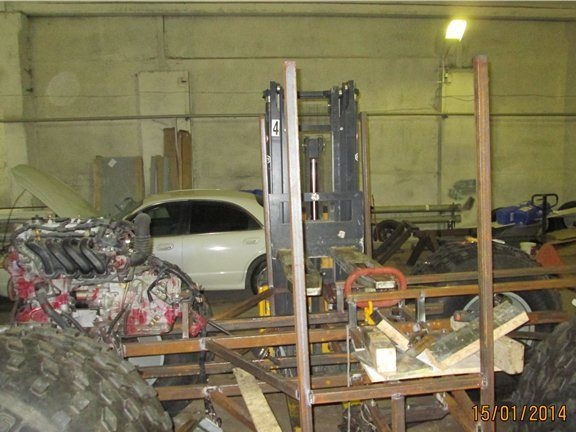
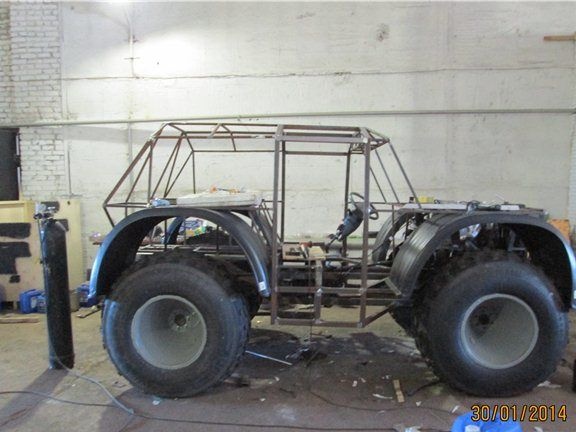
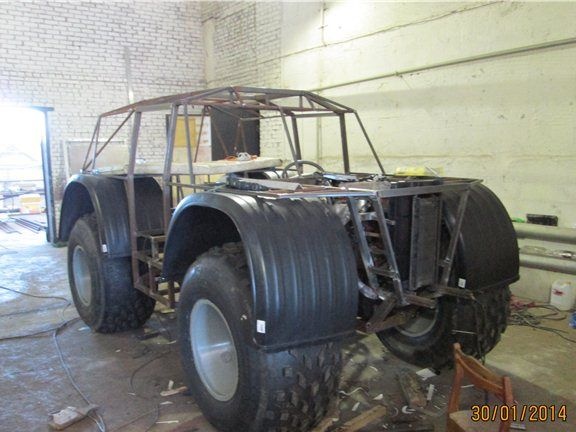
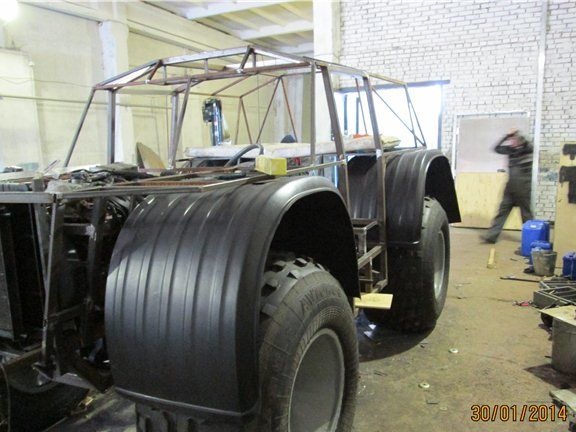
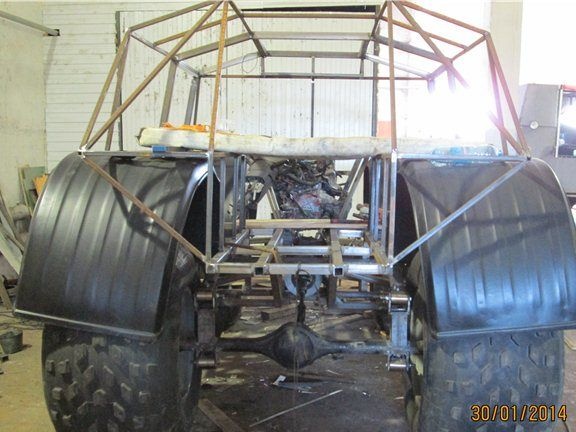
The next step was to install external cladding:
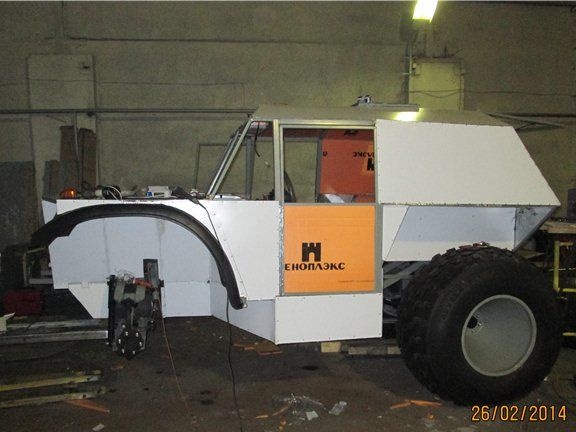
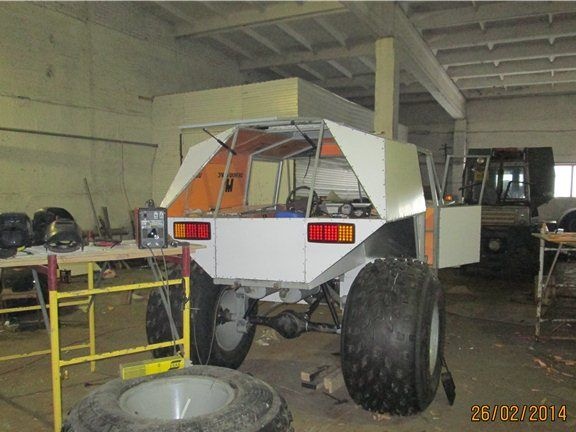
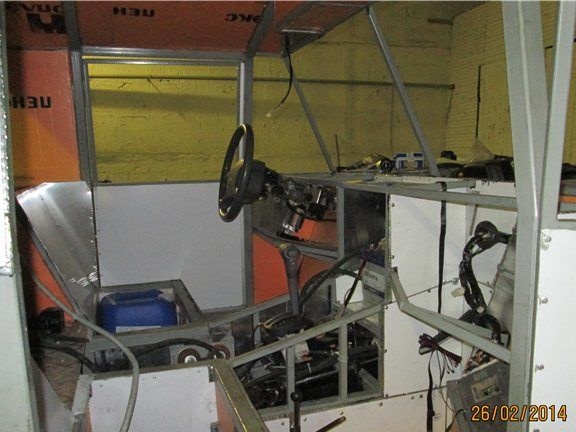
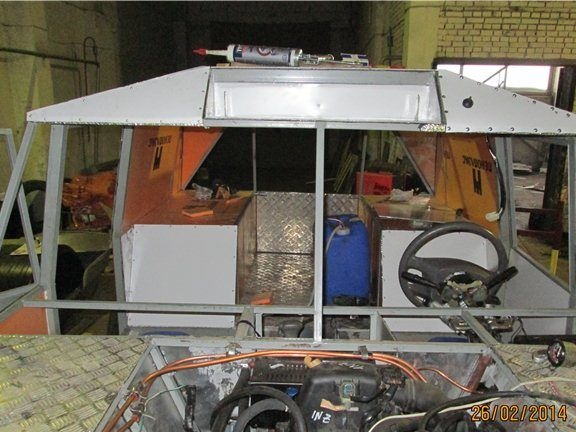
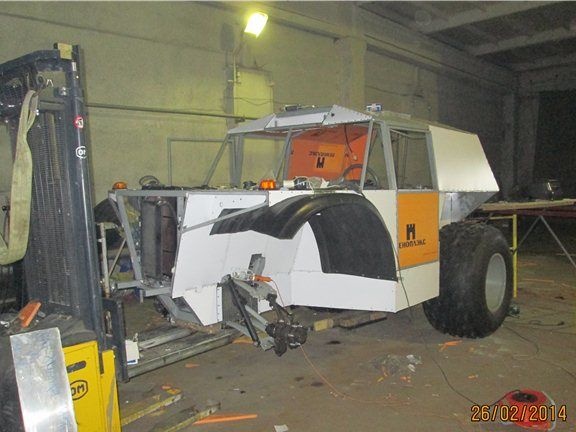
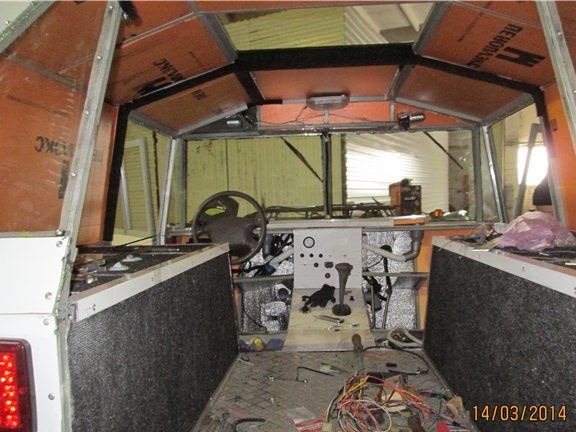
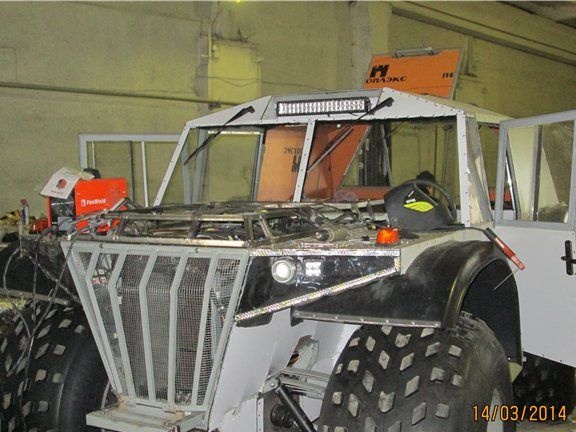
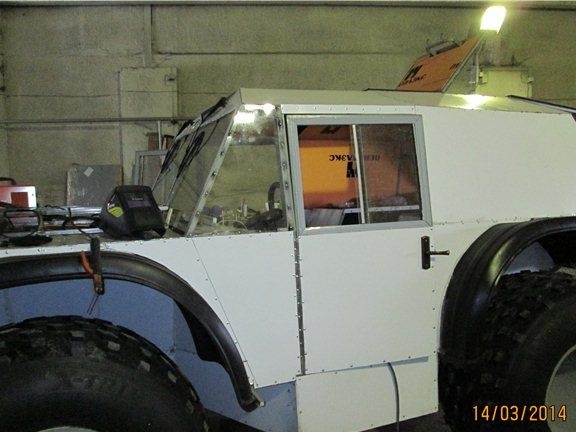
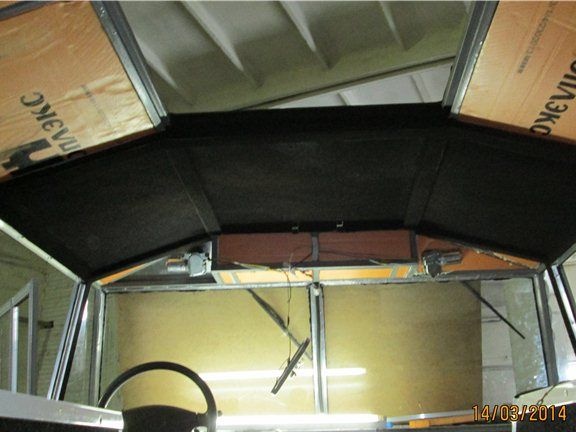
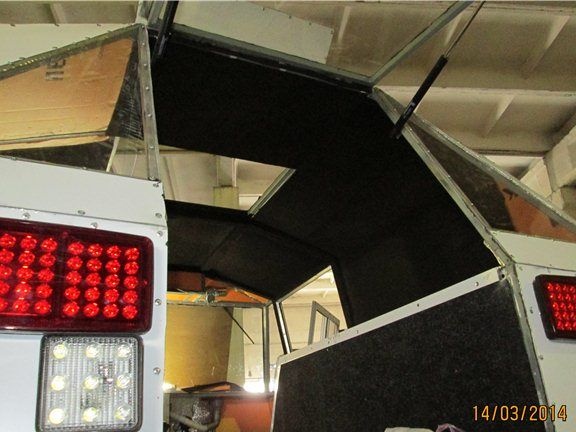
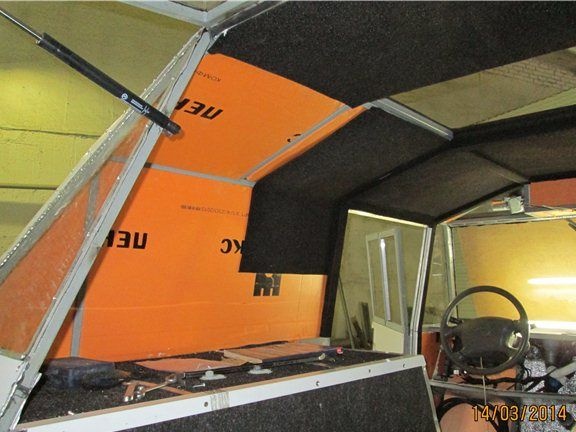
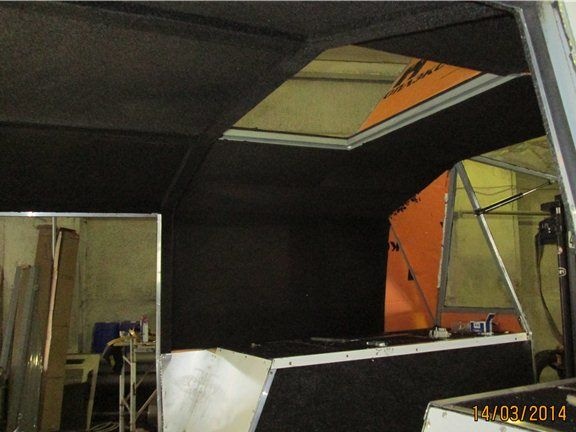
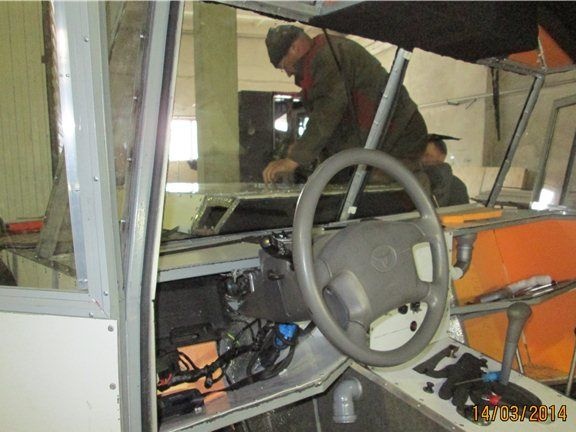
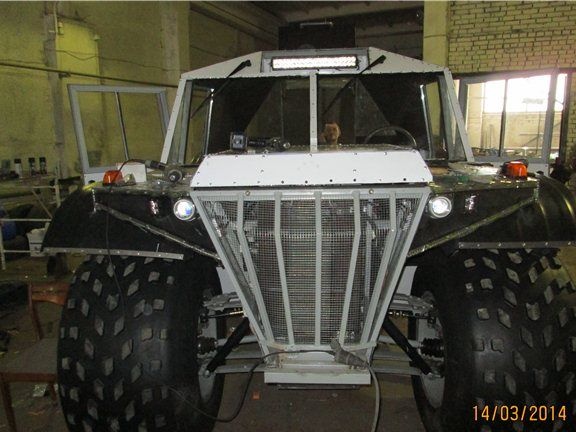
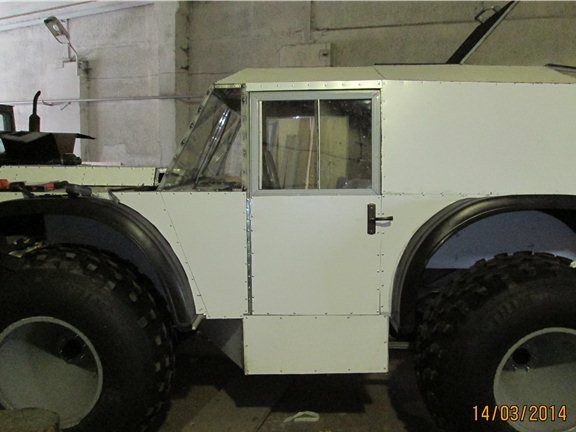
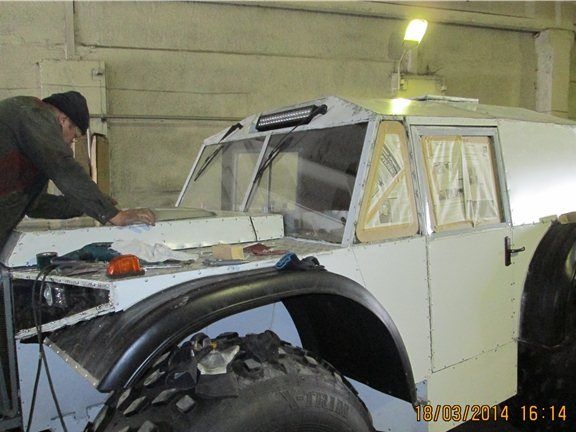
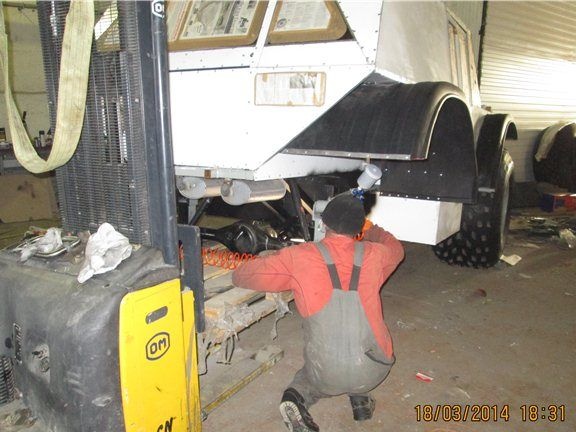
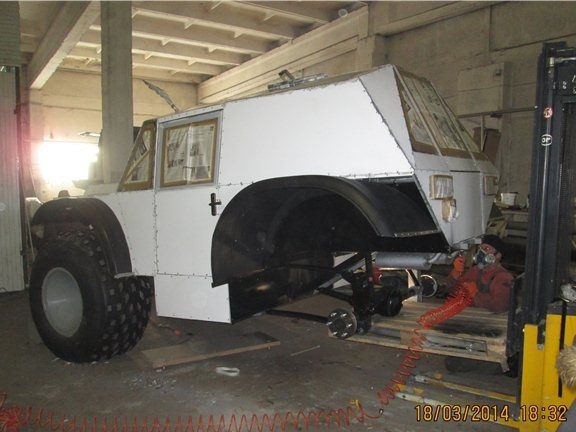
In some photos you can see the author of this all-terrain vehicle at work.
Final work on painting:
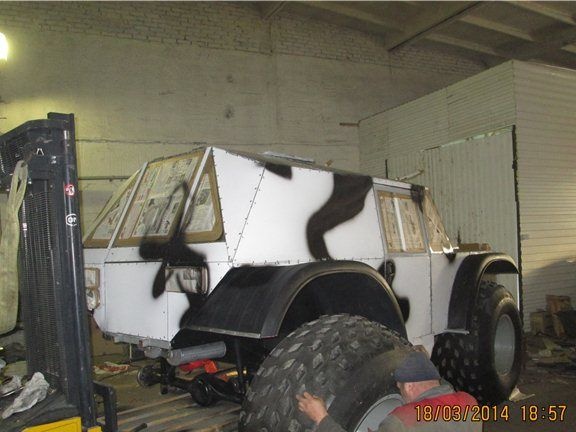
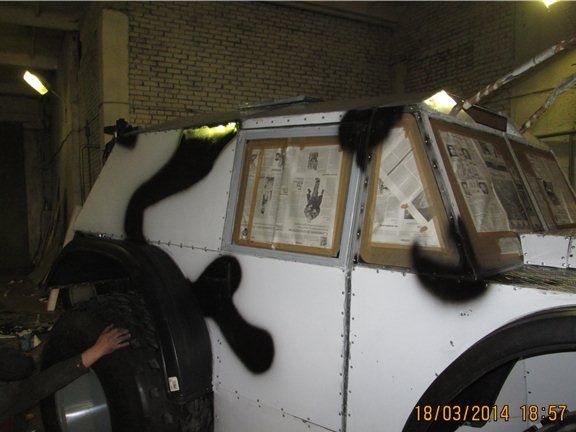
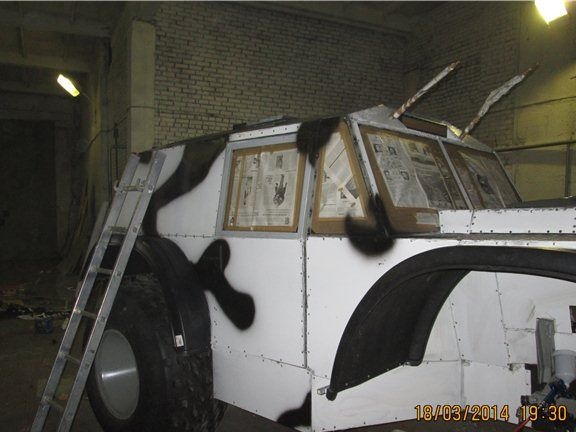
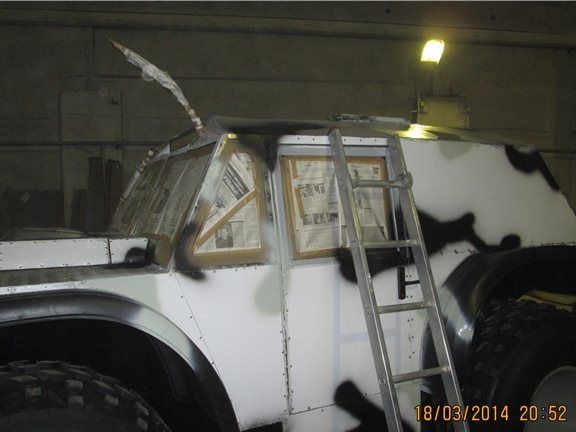
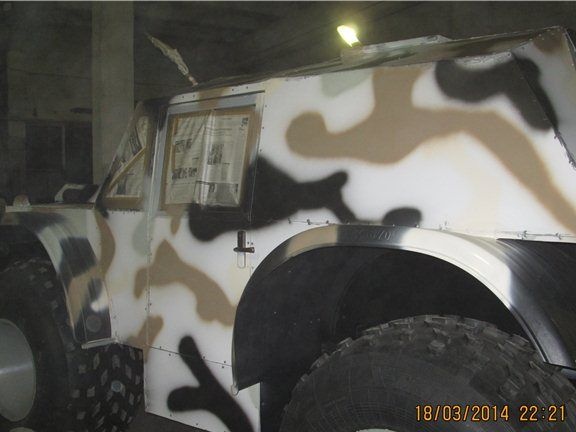
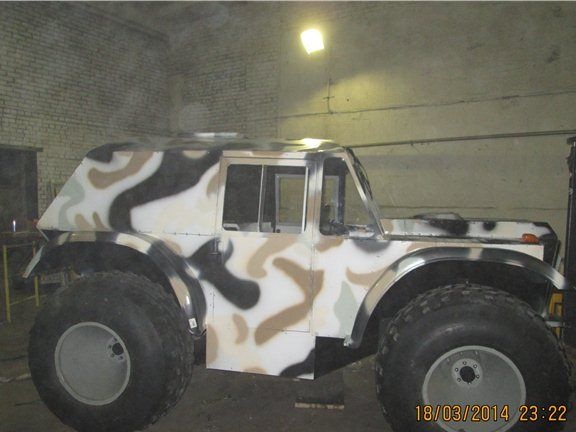
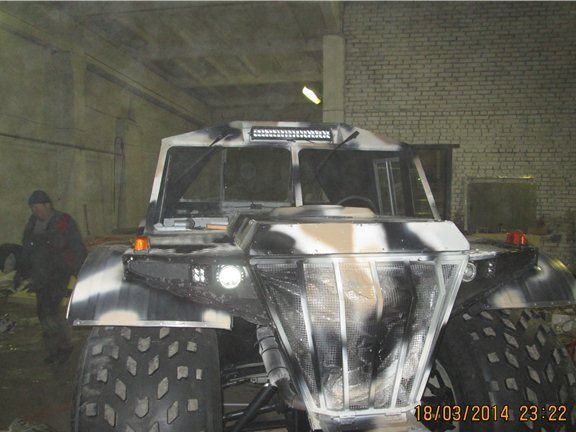
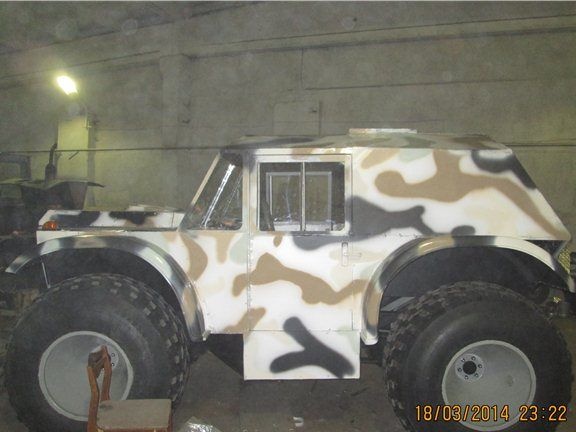
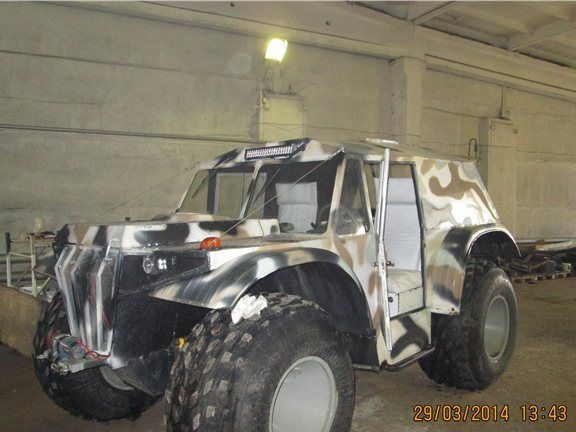
The author decided to use a coloring like army winter camouflage.
Consider the car interior:
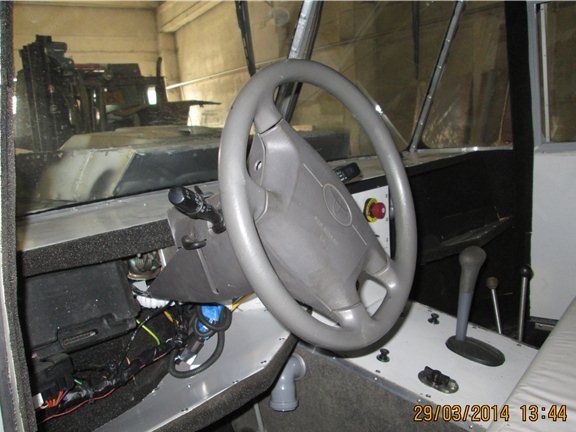
But a rather roomy car body:
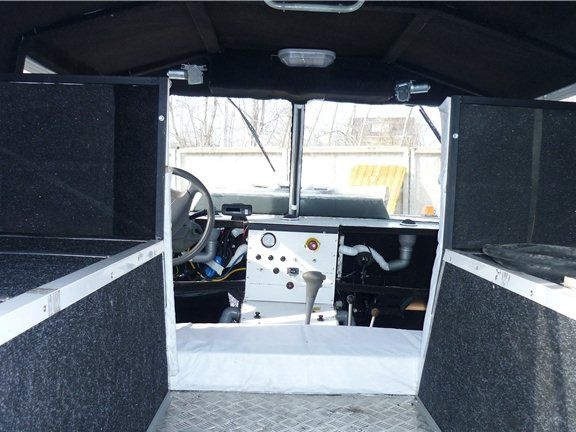
On the sides are seats \ benches, which also serve as tool boxes \ luggage and spare parts, which is quite convenient. A similar type of interior was used in the legendary Gaz-66.
A few photos of the finished off-road vehicle:

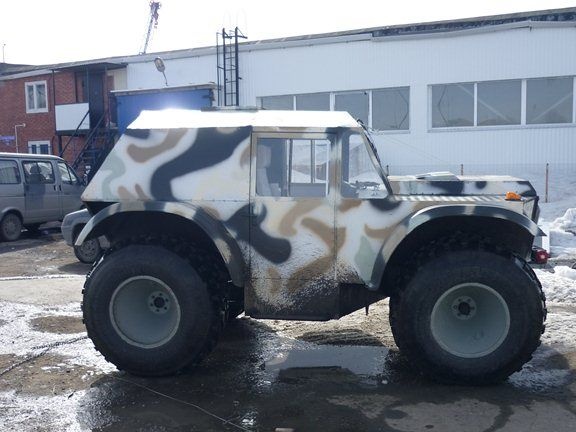
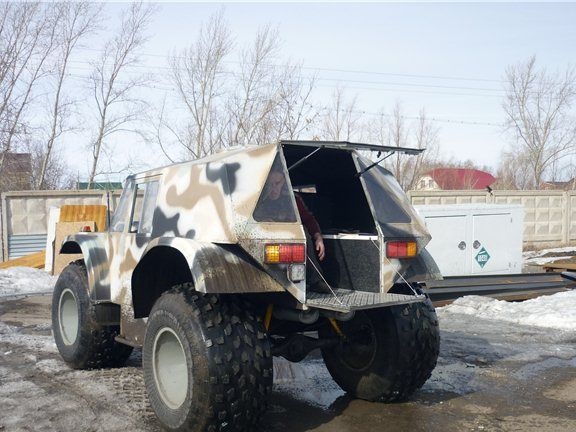
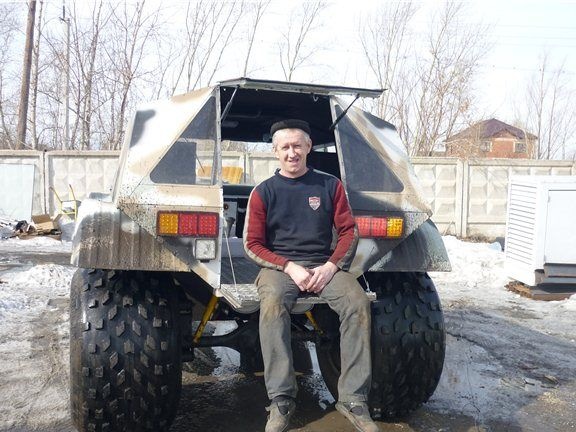
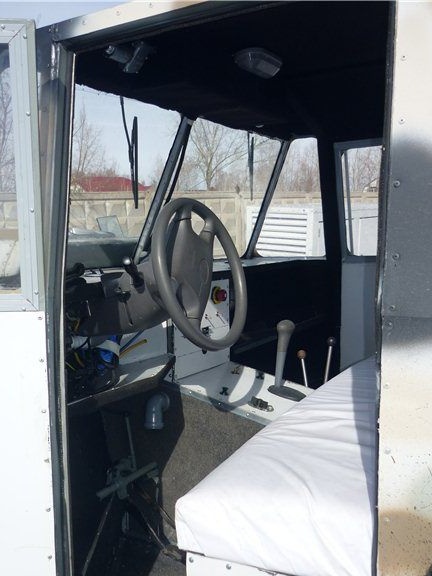
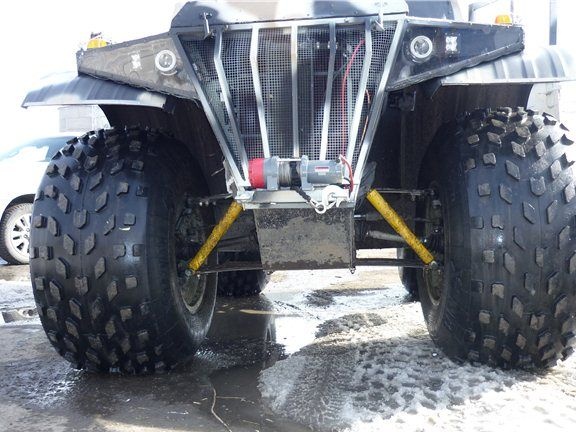
All-terrain vehicle overcomes water obstacles by swimming:
View from the driver's cab:
Such a wonderful all-terrain vehicle turned out, once again I would like to note that during the operation of serious damage did not occur, which indicates the quality and reliability of the all-terrain vehicle of this design. Also, the all-terrain vehicle behaves perfectly both on water and on land, and the complexity of driving does not differ from an ordinary car, so if you go hunting for 100 km, you will arrive there ready for events, not tired.
All-terrain vehicle author: Gvozdev Sergey.
